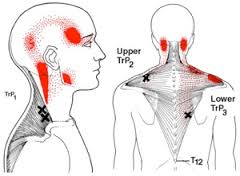Muscle imbalances are common in the upper body.
Stretching or addressing ergonomic setup alone doesn’t seem to be effective in giving much relief.
However, a systematic review (Chen 2018) showed that by strengthening the smaller stabiliser muscles around the shoulder can relieve pressure in your neck and help manage your symptoms effectively in the long run.
Here’s 5 Theraband exercises that can be done at home, gym or when you’re traveling that will help provide support for your neck and shoulder.
Aim for 2 to 3 sessions per week and it may take 8 to 12 weeks of training to adequately build your capacity and notice a positive difference.
Bonus tip, the research also showed general fitness training was effective in reducing neck pain in office workers. So make sure you’re getting your minimum of 150 mins per week, (as recommended by the Word Health Organisation).
List of exercises:
T’s
Shrugs
External rotation
Serratus punch
Rowing
If you’d like a personalised assessment of your posture and management plan set up for you, please use our easy online booking system below to schedule an appointment.



































